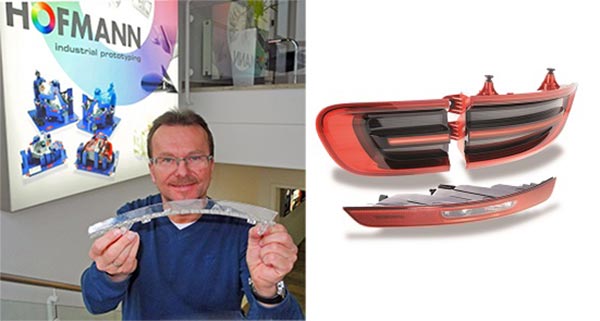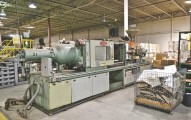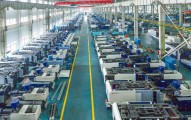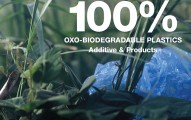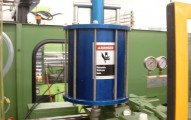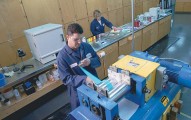Distortion-Free Edge Light Lens Thick-Walled Molded from Acrylic in Two-Shot Process
Nowadays in automotive design, lighting functions not only to provide illumination and signaling for the driver: it also more often than not contributes to the unique design of a vehicle.
For the new Porsche Macan, lighting specialist Hella developed a completely new rear lighting system incorporating light strips for guiding LED light. Using this approach, the signal light can be integrated flexibly and in a space-saving manner into the outer skin of the vehicle body. From an external perspective, the signal lights are smoothly integrated into the rear of the vehicle, which give the Porsche Macan its distinctive appearance.
The heart of the brake light is a thick-walled part molded of acrylic (PMMA) resin, which is the so-called light module or light strip. This part, which has a highly complex prism geometry and reflective properties for light guidance, was developed in partnership with toolmaker Hofmann Innovation (Lichtenfels, Germany). The light module also required the production team at Hella to fulfil high standards in production quality. A thick-walled PMMA body needed to be molded with two-shot injection molding technology that was absolutely distortion-free.
The design for the Porsche Macan chosen by Hella consists of three component groups. In addition to the edgelight modules, the rear light component groups consist of other components usually found in rear lights. This includes lenses made of PMMA in four colors (red transparent, grey transparent, black opaque and light red transparent), which are injection molded using three-step technology. The upper light lens features a unique heavily tiered external contour.
In this regard, Hofmann provided trial and pilot production in its state of the art technical centre in Lichtenfels. Hofmann’s production specialists were sought-after discussion partners for the production team at Hella before start of production. Says Vosswinkel: “The higher the requirements for a component are set, the more conservative the view of the production team concerning stable processes.”
Hella manufactures the series-production Edgelights from transparent PMMA on rotating tools. Each tool produces a left-hand and a right-hand component in each cycle. Here, the challenge for production lie in the correct geometrical forming and absolute cleanliness of the Edgelights. These requirements are essential to allow the light beams to shine with the desired intensity. After cooling, the light modules are delivered as individual parts to the rear light production facility.
In order to achieve the required light values, the thick-walled PMMA part, which is made of Altuglas HT 121 or Plexiglas8N from Arkema (Colombes, France), requires the highest standards in the two-shot process for the part edges. A further decisive factor is the highly complex “prism geometry” for the entry and exit of the LED light. As part of tool development, Hofmann was tasked with developing a 3D contour which would allow maximum light output at the point of emission and at the same time be manageable from a production technology point of view. This applied not only to the manufacture of the series-production tools, but also to the demolding characteristics of the light module in the tool, as well as elimination of warpage. “The function of the light module demands that the component be completely distortion-free, which is a challenge for us as tool designers, and for production at Hella”, adds Vosswinkel.

